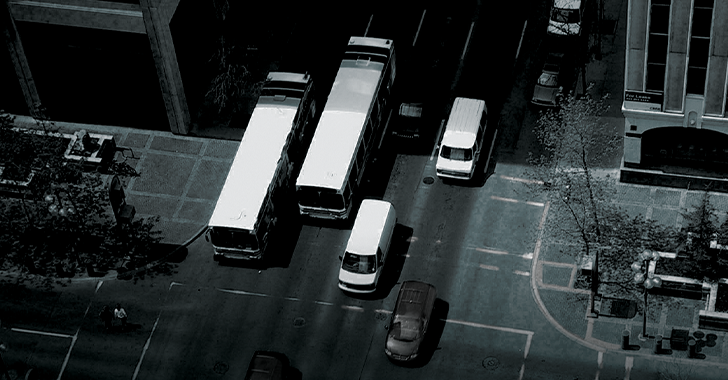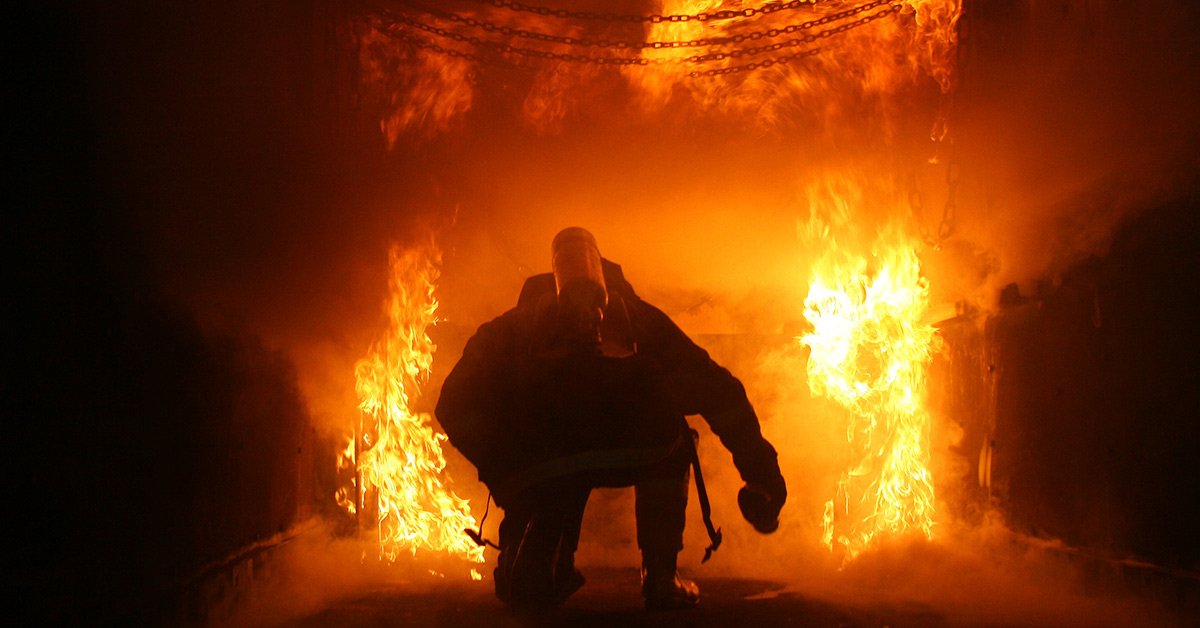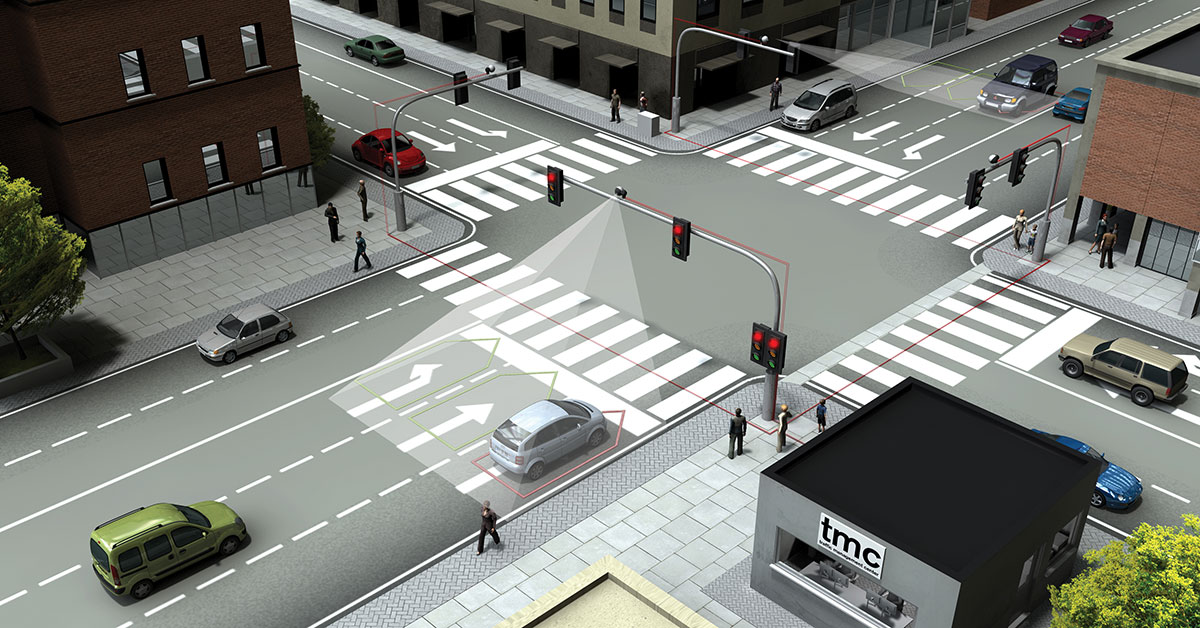Thermal Imaging for Safety and Efficiency in Public Transportation
Everyday, passengers rely on trains, metros or trams to take them safely and quickly to their destination. However, accidents caused by fire or by careless behavior can lead to delays as well as severe damage to rolling goods and rail infrastructure. Thermal imaging cameras can detect many of these incidents in time and help public transportation operators take the appropriate measures quickly.
There is also growing attention from train operators and authorities for active fire safety in railway vehicles and in underground railway tunnels, exacerbated by recent occurrences of accidents in metro tunnels at a worldwide level. Fires in tunnels and in railway vehicles can have devastating effects on people and infrastructure. The consequences of fires can in the worst cases result in fatalities, material damage and disruption of important infrastructure lines. Effective fire prevention, detection and control can therefore save lives and prevent high costs.
CCTV Safety Monitoring
Railway, metro or tramway operators want to prevent accidents as much as possible. Traditionally, CCTV cameras are being used to monitor public transportation environments, such as metro platforms or railway tracks. By detecting risky behavior from pedestrians and road users in time, CCTV cameras can provide a real-time warning to control room operators, who in turn can take the appropriate measures.
Although CCTV cameras are reliable tools for video analysis, they need additional algorithms to overcome several limitations. In order to work at night, additional light may be needed. CCTV cameras can also be blinded by light from the sun or train. Vehicles or pedestrians that are moving in shadows or inside tunnels can be a challenge to detect.
Outputs and/or events are generated in case of the presence of human movement in a certain user-configurable detection zone.
Thermal Imaging Cameras for Safety Monitoring
Thermal imaging cameras can overcome all of these limitations, because they create a crisp image based on subtle temperature differences and are not affected by environmental challenges, such as total darkness, smoke or fog. They do not need any light whatsoever and can’t be blinded by direct sunlight; they are therefore an ideal source for detection on a 24/7 basis.
Thermal imaging cameras produce images of invisible infrared or “heat” radiation. Based on temperature differences between objects, thermal imaging sensors produce a clear image in any lighting condition, day or night. Thermal imaging cameras will allow railway operators to detect trespassers, stopped cars on tracks, people falling from platforms on tracks, people walking in tunnels, etc.

Thermal imaging cameras can detect people walking along the tracks and trigger a message on a VMS panel in order to alert the driver of a potential dangerous situation.
Thermal imaging cameras give transportation authorities uninterrupted 24-hour detection of vehicles and pedestrians.
FLIR ITS-Series Rail
The FLIR ITS-Series Rail is an integrated thermal camera and detector for obstacle detection in public transportation environments. The camera offers 24/7 detection for a wide range of applications:
- People detection: FLIR ITS-Series Rail will detect people falling off a platform, entering a tunnel or walking on rail tracks, without being triggered by unwanted objects like small animals or passing trains.
- Obstacle detection at level crossings: FLIR ITS-Series Rail can prevent collisions by detecting vehicles that are stuck on a level crossing and blocking the passage of an approaching train.
- Fire detection in tunnels: FLIR ITS-Series Rail can measure the temperature of any object in its field of view, which allows it to detect fires at an early stage. The camera does not need to make physical contact with smoke to be able to detect excessive heat caused by fire or other malfunctions. As a result, fire is detected within seconds of ignition, long before it is capable of triggering any traditional fire detection system.

Detection of people on tracks, on platforms and in tunnels
By detecting people entering a train/ tram/metro tunnel or walking on an outdoor track, thermal imaging cameras can warn an operator with accurate information and position of the person. Also here, outputs and/ or events are generated in case of the presence of human movement in a certain user-configurable detection zone. Thermal imaging cameras can ensure 24/7 detection operation in tunnels regardless of surround illumination. They can provide a complete coverage of the tunnel portal, rails and maintenance pathway. As people can be standing and walking freely on the platform, waiting for a train or metro, thermal cameras can be installed on the tunnel ceiling or wand, where a virtual line divides the tunnel from the platform and is looking further into the tunnel. By doing so, thermal imaging cameras can provide reliable detection for people entering the tunnel from the platform or from the rails.
Vehicle detection and collision warning at level crossings
Level crossing accidents are a continuous threat and do not only harm and injure passengers but also damage the rail infrastructure and rolling stock. Thermal cameras can prevent collisions between trains and obstacles at level crossings by detecting if a vehicle stops on the tracks and is blocking the passage for an oncoming train. Via detection outputs or via TCP/IP, a warning signal is transmitted to a railway operations center. An operator can view the threat in his workstation and decide which safety scenario is appropriate. A vehicle-train collision can be prevented by warning the approaching train/tram through rail signals, warning lights or directly to the train/tram driver.

FLIR thermal imaging cameras allow railway tunnel operators to detect incidents or fires in an early stage.
Fire detection in tunnels and in train coaches
Traditional fire detectors often rely on smoke particles to physically reach a smoke detector. This can take quite some valuable seconds, by which time the fire can already have developed. On the other hand, traditional smoke detectors on railway vehicles often get falsely triggered by cigarette smoke, which makes them impractical.
Thermal cameras have the power to see starting and developing fires much quicker than conventional smoke detectors. A thermal imager does not rely on smoke particles to reach the sensor or ambient temperature changes, but uses thermal energy coming off the objects in its field of view. By adding dynamic video detection algorithms, thermal cameras can also take into account the size, rate of temperature increase and movement of a hotspot.
Thermal imaging can help prevent fires, by detecting hot-spots, or detect fires in an early stage so they don’t have a chance to spread. Thermal cameras can be configured to generate a direct alarm output to a control room operator when user-defined maximum temperature thresholds are exceeded. Thermal imaging cameras like the FLIR ITS Series Rail are widely used to monitor continuously for hot spots, so that an early fire alarm can be triggered and fires can be avoided.
Firefighters also use thermal cameras to enhance their vision and to see through smoke or detect hot spots. In addition, FLIR’s embedded thermal fire sensors for train coaches detect hot spots and fires before they have a chance to spread. FLIR’s embedded sensors have a low false alarm rate and will for example not be triggered by people smoking.

The images displayed may not be representative of the actual resolution of the camera shown. Images for illustrative purposes only.


